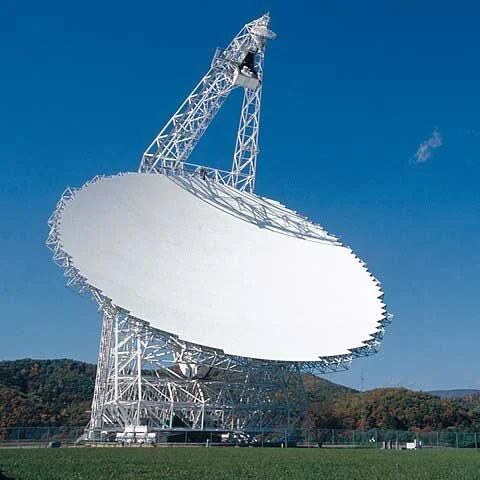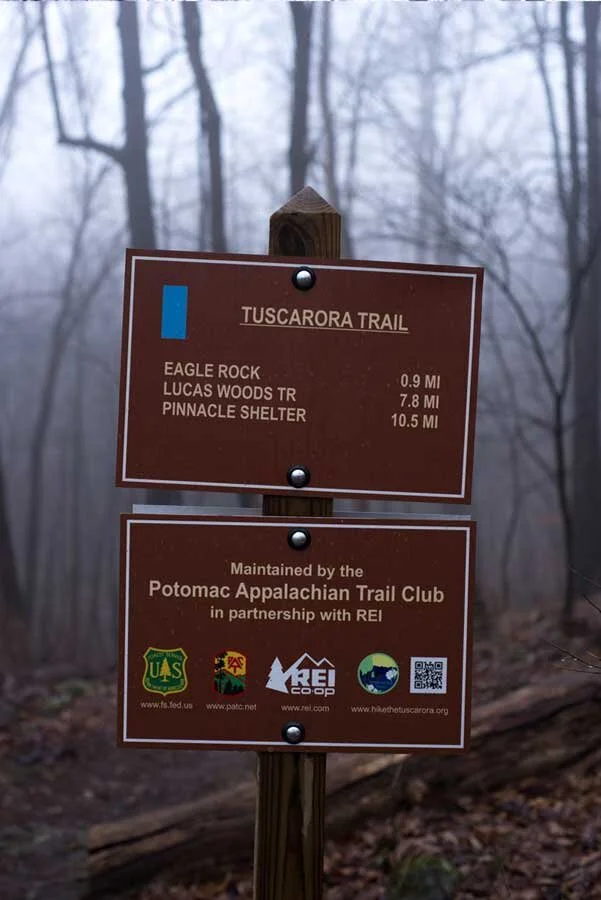Recording Nature in the National Radio Quiet Zone
What’s it like to live in our Nation’s Quiet Zone? Find out in this article!
After a recommendation from one of my subscribers (thanks Chip!), I learned about the anomaly that is Green Bank, West Virginia.
In this town, there's no cell-service and WiFi and radio are forbidden. Additionally, if you want to use a microwave, it must be enclosed in a Faraday cage to prevent it from emitting electromagnetic waves.
Since these conditions repel most humans, this area should be relatively noise-pollution free. I did some research on this area and decided to spend the first night of my field recording road trip there.
Table of Contents:
• The Green Bank Telescope • The National Radio Quiet Zone • Device Restrictions • My Experience and Sound Recordings • Final Thoughts
The Green Bank Telescope
The Green Bank Telescope. By NRAO/AUI/NSF - https://public.nrao.edu/gallery/green-bank-telescope
Green Bank is home to the world's largest fully steerable radio telescope in the world. It is 485 feet tall, and its main dish is 2.3 acres in size!
The telescope collects radio waves from space and uses them in observations, measurements, and discoveries of stars, galaxies, black holes, and other astronomical objects.
These radio waves are extremely weak and must be concentrated and amplified before they can be useful to astronomers. That’s the job of the Green Bank Telescope.
Much like how a parabolic microphone works, the parabolic dish of the Green Bank Telescope collects, concentrates, and amplifies radio waves from precise objects in space. The data is then analyzed by scientists.
Radio telescopes are used for tracking celestial objects, determining elemental compositions of stars, and even for observing dark energy.
For more information about radio telescopes, see this article from the National Radio Astronomy Observatory.
National Radio Quiet Zone
The National Radio Quiet Zone (NRQZ). By Joel Bradshaw - Derivative of public-domain http://www.gb.nrao.edu/nrqz/nrqz.shtml
The radio waves observed by the Green Bank Telescope are over a billion times weaker than radio waves emitted by a cellphone. If a cellphone was used near a radio telescope, it would completely distort the signal from space. Think of it like someone yelling right next to your parabolic microphone while you try to record a distant bird.
Although the Green Bank Telescope was built before the invention of cellphones (1956), radios existed and posed a threat to the device. A remote location far away from radio transmissions was a necessity and Green Bank, West Virginia was the perfect location.
Nestled between the Blue Ridge and Allegheny mountain ranges, Green Bank is naturally shielded from many radio waves. For additional protection, the Federal Communications Commission (FCC) created the National Radio Quiet Zone (NRQZ) in 1958.
The NRQZ is a 13,000 square mile region in which radio transmissions are heavily restricted to protect the radio telescope from interference. It is divided into 5 zones with increasingly strict restrictions the closer one comes to the telescope.
Device Restrictions
Within the National Radio Quiet Zone, radio transmissions are limited to one station in the AM band and only a few, low-power FM stations.
Within a 20 mile radius around the observatory, residents cannot use WiFi routers or microwave ovens. This area is actively policed with vehicles equipped with sensors for detecting electromagnetic radiation.
Within the observatory grounds, cell phones, digital cameras, and even gasoline engines are prohibited. Only vehicles with diesel engines may enter the facility due to interference caused by spark plugs in gas engines.
With strict limitations posed on residents of Green Bank, perhaps it’s no surprise that its population is about 150.
My Experience and Sound Recordings
I chose to spend the first night of my field recording road trip within the upper left-hand corner of the National Radio Quiet Zone (NRQZ).
I left at 12pm and should have arrived at 6pm, giving me 2 hours before sunset to hike in and setup my recording equipment. Unfortunately, a large accident shut down all lanes on I-81S. This delay caused me to arrive at the trailhead at 7:45pm.
In the dying sunlight, I only had time to walk around and take some photos. I wanted to setup a drop rig, but with the coming rain and no sheltered spot, I did not.
Throughout the night, I was periodically awoken by intermittent rain showers. I made a couple recordings of this sound but they're nothing to write home about (see below).
In the morning, I awoke to a spooky landscape covered in fog. I took advantage of this opportunity and went for a walk with my camera and recording gear.
Despite the 45°F temperature, my fingers were frozen by 18mph winds and high humidity.
Eventually, I found a ridge where the wind sounded particularly interesting and setup a recording. I used my new SASS binaural microphone paired with a Sony D100. I recorded for 1 hour and ended up with a 9 minute segment of usable sound.
I was still quite close to a main route and the recording suffered from a lot of vehicle noise (and airplanes of course).
Final Thoughts
Although I didn't capture any great recordings here, this area still holds my interest. On my return journey, I will stop in this area again but will go closer to Green Bank. I believe that the arrival of spring paired with the low population could yield long, noise-free recordings.
My only question is: do field recorders and microphones emit electromagnetic waves? Probably. Is it enough to get me in trouble? I guess I'll find out.
The next stop on my adventure will be a four-night stay in Virginia.
To see all of my sound story adventures, click here.
If you have any questions, feel free to ask me through the contact page on my website.
Support Acoustic Nature
If you enjoyed this post and would like to help support Acoustic Nature, please consider "buying me a coffee" or becoming a Patreon with the buttons below.
As a thank you for your support, Patreon supporters receive a copy of Field Recording For Beginners, exclusive access to the full Behind The Sounds video series, nature sound library downloads, and more.
If you are unable to support the site financially, please share this post with others, or leave a comment below letting me know you enjoyed this post! Both are free and help the website grow. Thank you ♫
Thanks for reading,
-Jared





















